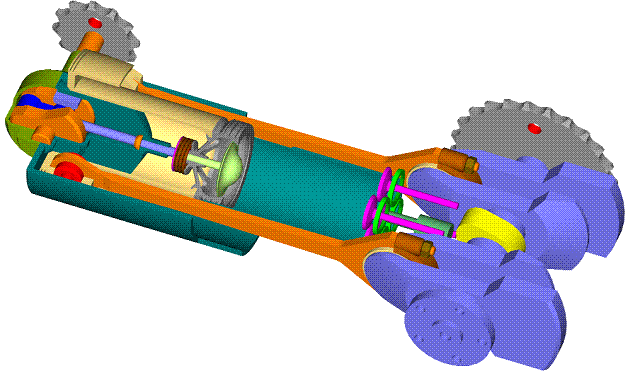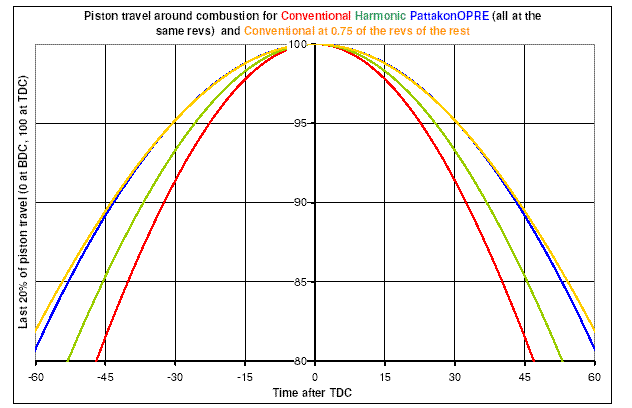Okey dokey. Following that link, then hitting the 1984 Turbo link, then scrolling down and going to the "Advanced Turbo Page" brings you to a few flow characteristics for the compressors
http://www.thedodgegarage.com/turbo_advanced.html .
When you say "fairly large diesel engine" in your earlier posts you could mean a fair few things, but taking say, a 1.8L 4 cylinder, revving to say 5krpm as an example:
1.8L * 5000/60 * 0.5 = 75L/s of air = 0.075m^3 per second. Air density is around 1.225Kg/m^3, so that's about 0.09Kg/s. The boost pressure will increase its density so maybe it'll actually flow about 0.15Kg/s if you've got plenty of pressure.
0.15Kg/s = 20lb/s air flow.
Reading from the characteristic for the T3, on that webpage, 20lb/min is pretty much halfway along the bottom axis.
If you want 7psi boost, that's a pressure ratio of about 1.5, so reading across to the curved line, you'll need about 96000rpm. With a crank speed of 5k, that's a 20:1 gear ratio.
Alternatively, come down to the 78,800rpm line, and maybe accept a bit less flow - 17lb/min, and the pressure ratio is 1.3, so about 4.4psi boost.
Come down to the 56k rpm line and you get 1.2PR (3psi) boost at the surge limit, falling probably to about 0psi boost at 15lb/min flow.
To get something useful at the kind of rpm you're talking about you're going to need a much larger diameter compressor wheel. Something off a dirty great truck engine might work, but I'm not sure how well it'll react to the small flow quantities you'll be demanding.
I wasn't joking about the vacuum cleaner impeller. If you read around on the internet you'll find plenty of people that have made small jet engines out of turbos, and a handful of people that have made their own compressor wheels or use stuff similar to hoover impellers.
Given the low speeds, low pressures and low temperatures you're likely to use, having an aluminium impeller capable of 200krpm (overspeed) in a thick, heavy aluminium housing built to contain much higher pressure seems like lots of extra weight.




